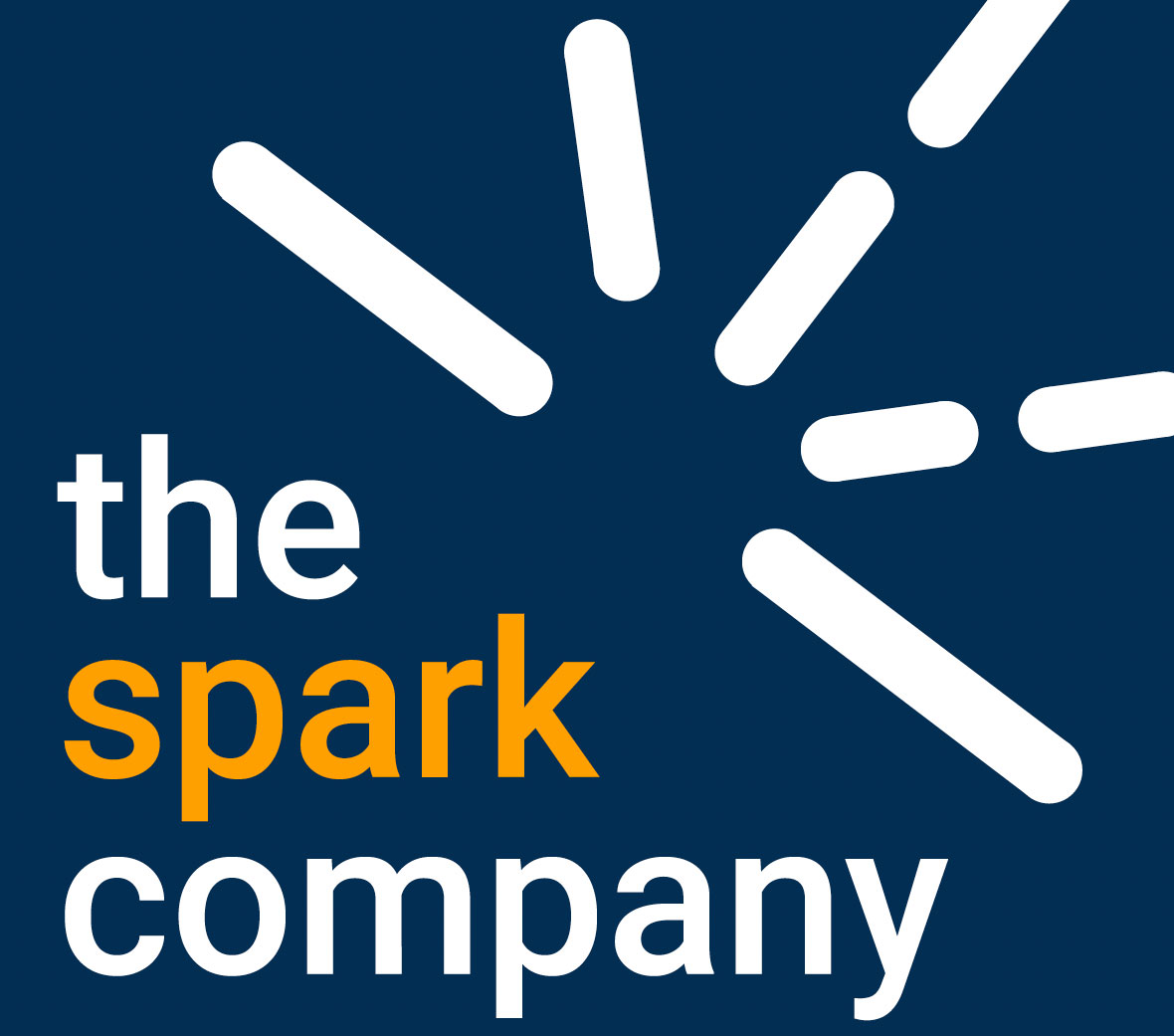Many businesses are now under extreme financial pressure, as the price of energy bills, goods and services continues to rocket. But that’s not all CEOs are worrying about, in addition most decent bosses will also be deeply concerned about how their people will survive the coming months.
CEOs are grappling with current cost of living crisis and how the aftershocks of the pandemic effect their operations. But you can’t separate the prosperity of a business from the prosperity of the workforce. There is now a growing, immediate need to make sure people have food, warmth and shelter. How shocking is it to read that several NHS Trusts have already set up food banks or launched food voucher schemes to support their staff?
As well as being an all-round total sh*tshow for running a business and a household, the UK cost of living crisis inevitably blurs the boundaries between home and work ‘problems’. The burden of everything being too expensive, weighing heavily on personal lives, work lives and mental health.
Leaders now recognise that the cost of living is affecting people at work
There’s no arguing that life feels uncertain, and the economic outlook is unclear. We don’t know how work will be affected by the cost of living crisis, and many business leaders are still trying to work out what to do for their customers and team members. If you understand what’s likely to happen in your business, it will help you design the right support for your team…
Our pandemic 'heroes' are going to suffer disproportionately vs. everyone else
“Individuals’ preference and satisfaction levels in relation to reward are dynamic, not fixed. External events, for example a recession, can affect individuals’ confidence, altering their satisfaction with current reward offers.” — CIPD 2015, Show me the money, the behavioural science of reward
Proactively talk to your team about the support available to them
Just yesterday, the Office for National Statistics (ONS) announced that the main measure of inflation, the Consumer Prices Index (CPI) was 11.1% in October 2022, up 10.1% in September 2022. CPI is at an eye-watering figure and it’s not something you can control, so what can you do?
In addition to the short and medium-term options we’ve discussed in this article, there are opportunities for leaders to help insulate employees against future financial hardship. Here’s some ‘slow-burn’ options that are likely to help with the family finances, and increase engagement, loyalty, productivity and performance.
We are passionate about finding ways to help bosses do the best they can to look after their people. Some of what we’ve outlined here is simple, but implementing activity that’s targeted to help those that need it most often gets businesses in a pickle. Primarily because they get bogged down about treating all employees the same. If you need help to work how to support those that need it in a way that’s fair and legal, then please drop us a line. We’d be happy to talk to you.


How will work life be impacted by the cost of living crisis?
Shift in balance of home / office working
Key workers will suffer disproportionately
Many working people with modest salaries will be in fuel poverty

What can CEOs do right now to support employees through the cost of living crisis?
If you’ve made more than you thought, share it!
Don’t pay for employee benefits that nobody uses
Satisfaction with pay, reward and benefits is constantly changing – you have to keep pace with the market!
Make sure everyone knows if help is already available
Plan for more people coming ‘in’ rather than working at home

What should CEOs do in the medium term to help employees survive inflation?
Pay your team fairly
Bring in independent advisors to help people
Creative thinking around the affordability of travelling to work
Help people charge their cars for free

How can CEOs insulate their staff against future financial hardships?
Performance-related pay scheme
Shadow equity schemes
Long term incentives plans (LTIP) for executives
Don't know where to start when it comes to supporting your team through the Cost of Living Crisis?
Tag: People-Focused Culture
How to Lead Hybrid Teams
Shake it all about! We all know traditional working practices have changed. People have been flipping between being in and out of the office for over 2 years now. Something which has undoubtedly shaken many companies.
Lots of office workers have now been instructed to return for at least some of the week. But the situation that greets them varies hugely between organisations, internal teams and even pay grades.

How does it feel if your CEO has said you have to be in the office everyday, but you’ve not seen them up close and personal for weeks?
Or how about if some teams in the business are in, but others are entirely home-based?
The aftermath of the pandemic has left a huge swathe of organisations with fragile, fractured or ‘not quite figured out yet’ working environments. Some organisations moved quickly to new working policies whereas others have muddled along without formalising new ways of working.
C-suite executives expect 87% of work to be done via some form of hybrid working
According to research by McKinsey, most organisations don’t yet have a detailed vision in place for hybrid working, with as few as 3 out of 10 organisations having both prepared for and communicated their vision for the post-pandemic world. Despite this, executives expect most work to be done via some form of hybrid work in future. Perhaps many of us are still in ‘reaction mode’ and the case for hybrid working is still unclear?

Why could a hybrid working model be good for my business?
If you’re considering it, it’s probably because you’re already doing it in some way. Hybrid working became a necessity in the pandemic.
Some organisations only did it because they had to, and for some companies, being at work in person will always be the best model for them.
Hybrid working is no longer a ‘nice to have’, it’s a ‘must have’ for most workers
Benefits of Working at Home
-
Focused periods of concentration on tasks that are best done uninterpreted.
-
A place to do virtual calls.
-
Good for those who need adjustments to their working environment, such as people with a disability.
-
More useable time in the day for those who have a lengthy commute.
-
A better work/life balance.
Benefits of Being in The Workplace*
Informal learning of technical knowledge… being in earshot of colleagues.
Learning good leadership skills by listening to and ‘soaking up’ the actions of positive role models.
More chance to naturally include less confident colleagues, in meetings that are in-person.
More opportunities for new starters to absorb company culture.
*Not of the ‘benefits’ of working in the workplace are effective if leaders and relevant colleagues are not there… AT THE SAME TIME!
Absorbing and contributing to company culture is virtually impossible at home

How do I lead a fully hybrid team?
Hybrid working is not new. Tech companies like Google have been doing it across teams successfully for many years.
The reason they and others adopted it in the first place was because it was better for productivity.
For hybrid working to work, leaders need to be clear and visible and employees need to understand how their work fits into big picture company objectives.
Agree the ground rules for hybrid working, including what leaders need to do
Five practical steps to successful hybrid working
There are some specific steps that every leader can take to make hybrid working work for you, your team and most importantly, your customers. One word of warning before you start…don’t be the CEO that says everyone has to work in a certain way, except you. That’s a sure-fire way to make sure hybrid working doesn’t work.
Step 1 – Make an Agreement (Formal or Informal)
If people have become used to the flexibility of 100% home working they need time to put a new routine in place.
Remember, people will be factoring in the cost of commuting, cost of living and childcare responsibilities.
You may be perfectly entitled to have them back in the office but do it with compassion.
Top Tip: an informal or formal agreement can help get people back into the office, particularly if different parts of your business need different levels of on-site and remote working.
Step 2 – Lead by Example
You may have always worked from home as a leader, but for hybrid working to be successful, days in the office have to be really meaningful.
You need to model this way of working to make sure that engagement with company culture and productivity stays high.
Not sure your company culture is strong enough? Here are 10 proactive things you can do as a leader to improve your culture.
Step 3 – Make Office Dates Matter
Understand which tasks work better at home and which benefit from face-to-face communication and plan around this.
There is no point in scheduling lots of virtual calls on a day when everyone’s in the office. It’s pointless. (Ever travelled to work, done a day of Teams or Zoom calls from the office, then travelled home when you could have been anywhere? Ergh.)
Also try to schedule company-wide office dates so that people are able to ‘drop in’ on useful colleagues.
Step 4 – Plan Unstructured Collaboration Time
Scheduling unstructured collaboration time will invigorate your team, encourage creative thinking and help people feel positive about coming into work.
A Deloitte survey of over 3,500 workers showed that people are up to 20% more satisfied with their workplace culture when they have access to collaboration tools that enable them to work in teams, and 34% happier with their workplace when collaboration and innovation are encouraged.
We also know that productivity, revenue, and profitability are all positively impacted by engagement at work – collaboration with colleagues is just one way to keep your team engaged.
Step 5 – More Office Time For New Starters & Their Managers
Your organisation is a complex web of different traits, habits, actions … ways of communicating.
All of these are compromised if newbies aren’t properly integrated into the organisation.
Plan extra time in the office for people joining your organisation and their managers.
Top Tip: set an expectation that managers are on-site with new colleagues for their induction, you can share the responsibility amongst a pool of managers so new starters kick-start their internal networking.
Ringfence your time at the office for collaboration and engaging with your team

Why can’t I get my team to come back to the office?
Lots of people like working from home but it’s not without challenges, subsequently a sensible hybrid model is a pretty logical way of working for most people.
So, if you’re really struggling to get people to come back, it’s likely that your office was not a welcoming, inclusive and flexible environment in the first place!
If you’re a leader that would like a conversation about how to create and manage a hybrid working model, get in touch. We’ll show you how to enhance every professional relationship across your entire business.
A welcoming, inclusive and flexible workspace is essential for hybrid working
Don’t know where to start?
I know that making changes to your workplace and culture can be daunting – most people don’t know where to start.
I love working with Exec Teams to improve performance and unleash the potential of their organisations. Who knows what you might achieve?
Give me a call if you want to explore the options for hybrid working in your team.
Image credits
Images sourced from Canva Pro and are photographers are not individually credited. If you see one of your photos above,please let us know so we can credit you here. Photo of Andrew Knight by Nick Morrish from Nick Morrish Photography
References
Digital collaboration. Delivering innovation, productivity and happiness. Deloitte (2013)
What executives are saying about the future of hybrid work. McKinsey & Company (2021)
Cut through to your customers: Use HR Business Partners to sharpen your competitive edge
Business partners are strategic thinkers, who nurture talent and get things done. In HR they can improve people management, reduce pointless admin and get the team firing on all cylinders.
They see through internal teams, to focus on bigger business goals, helping create better synergy between everyday work and big-picture company ambitions.
Business partnering was designed by Dave Ulrich almost 30 years ago, to help join up organisational strategy, workplace culture and business objectives. The model creates people solutions that deliver better commercial results.
HR Business Partners create solutions that get you better results

How do HR Business Partners (HRBPs) work?
It varies depending on the business, but there are two common models of HRBP, explored in detail by the CIPD in their Business Partnering Factsheet, but in brief:
Standalone HR Business Partners – aligned to a specific business unit
The CIPD defines this role as “the focus of the relationship between HR and L&D and the business, ensuring HR and L&D are aligned effectively with the teams and individuals they support. BPs are facilitators and business consultants, ensuring that the HR value proposition is both relevant and effective.
Three-pronged HRBP model – where the HR service runs across three areas of expertise:
-
Shared Services – A centralised group handling transactional services across the organisation, such as payroll, sickness, recruitment and administrative HR support.
-
Centres of Excellence – Small specialist HR teams, delivering business and people benefits. They tend to manage work around innovation, learning, reward, employee engagement as well as nurturing talent.
-
Strategic Business Partners – Experienced people professionals who work closely with leaders. Embedded in business units, influencing, steering and implementing business and people strategy.
HR Business Partners work closely with leaders to implement business strategy

What does a good Business Partner look like?
Business partnering is skilled role that needs a mix of experience, values, capability and knowledge. It’s not suited to everyone.
I’ve seen HR Business Partnering done differently in many organisations and every successful HRBP has a unique set of skills, knowledge and experience.
Business Partner Skills
There are some specific skills that elevate fantastic HRBPs way above the mediocre. A top level HRBP will be able to:
-
Quickly establish positive working relationships that deepen over time.
-
Work closely with business leaders and/or line managers.
-
Lead on complex HR projects with credibility.
-
Be change-makers – oozing business culture & values, to shape influence and inspire change.
Business Partner Knowledge
A good HRBP needs to know what they’re talking about and be able to communicate their expertise to others with passion and flair. They will be:
-
Embedded in the business, a person ‘in the know’.
-
Able to use the tools of the trade – models that support change and organisational design, employee engagement tools and other strategic ‘instruments’.
-
Steering and implementing business and people strategy.
Business Partner Experience
An effective HRBP has credibility. It’s not a role well suited to ambition without experience. It works best when a person is:
-
A senior and/or experienced people professional, who may have held a leadership role in the past.
-
A confident generalist although they may have specialised in the past.
-
Familiar with navigating complex people situations, everything from changes and reorganisation to the most challenging grievances, disciplinaries and performance issues.
A top-notch HRBP helps leaders to navigate complexity and change

How do I know if HR Business Partners would work in my organisation?
It doesn’t work in every organisation, it’s not a model that can be bolted on to a very old-fashioned way of managing people.
You need a certain amount of infrastructure and systems in place already for it to work and you need to work at it once you’ve introduced the model.
Making HR Business Partnering work for you will take time, effort and resources

Four key questions you can ask yourself to find out if HR Business Partners could transform your organisation…
As it’s not a simple ‘yes’ or ‘no’, we’ve helpfully devised four key questions you can ask yourself to figure out whether an HRBP model could benefit your business.
The best HRBPs transform organisational performance and productivity
Question 1 – Do I have a clear business strategy or some form of business plan with tangible outcomes, objectives or goals?
This matters because HR need to know how to help teams internally deliver what customers want. True HR business partnering is about enabling your people to achieve their goals and serve your customers better.
Question 2 – Do HR have a seat at the table in top-level decision making?
This is crucial. If your HR Team is not represented at the top level of your business then they’ll never have the opportunity to make the kind of strategic impact you’re going to need.
-
In large organisations this means a Chief People Officer or HR Director on the Exec Team or Board.
-
In smaller organisations this means a Head of HR or Business Partner reporting directly to either the Chief Executive or Managing Director, or one of the directors of your business.
Question 3 – Do I have the infrastructure to produce good (read that as reliable) data about my people?
This matters because good HR is about evidence-based practice and measuring the impact of our work. As the old saying goes ‘what gets measured gets done’.
Question 4 – Do I care about our high levels of engagement, wellbeing and team morale?
Wait…what…of course I do! This question matters because there’s nothing worse than introducing a modern and mature approach to people management in your organisation, if it’s not aligned with the way you do things.
How did you do…?
If you answered mostly postively, then congratulations, it’s likely that a HR Business Partnering model will work for you! If you answered mostly negatively, then you probably aren’t ready to introduce HR Business Partnering just yet… but don’t despair, you can get there.

In a nutshell, if you don’t have a HR Business Partnering model, you’re probably missing out…
As The biggest benefit of the HRBP is to create solid connections between your people and your business goals, making sure that all people activities in your business link with what the customer needs.
In short, if a ‘people task’ doesn’t help you achieve your business goals, then don’t do it.
Don’t know where to start?
I know that HR can sometimes seem like a dark art and the thought of changing to a different way of working can feel overwhelming.
I love working with Exec Teams to improve performance and unleash the potential of their organisations. Who knows what you might achieve?
Give me a call if you want to delve further and explore how a HRBP model could work for you.
Image credits
Images sourced from Canva Pro and are photographers are not individually credited. If you see one of your photos above, please let us know so we can credit you here. Photo of Andrew Knight by Nick Morrish from Nick Morrish Photography
Ascenti | Bespoke Leadership Development Programme
A great partner for any business
“Andrew at The Spark Company is a great partner for a business to work with. He combines a practical, no nonsense approach with good technical knowledge and quickly builds a rapport with existing teams to hit the ground running.”
Jacinta Magee
Chief Financial Officer
⭐️ ⭐️ ⭐️ ⭐️ ⭐️ Google Review

Client
Ascenti
- Ascenti is the UK’s leading provider of physiotherapy and mental health services.
- The Ascenti team provides excellent patient care at over 400 clinics across UK, supported by office-based and regional teams.
- Patients are treated by a national network of 500 directly employed Ascenti clinicians delivering upwards of 600,000 treatment sessions every year.
Challenge
Design and deliver a structured leadership programme for line and middle managers
- Like many rapidly growing organisations, Ascenti identified their leaders needed structured development programme to enable their growth ambitions.
- Ascenti’s Exec Team asked us to come up with a bespoke programme.
- The initial cohort would include line managers and middle managers, with various levels of experience.

A safe space for leaders to flourish
“From the very first meeting I had with Andrew he felt like part of our team and not an external consultant. He went on to lead on our management training using the Insights Discovery Personal Profile and is an amazing facilitator, allowing for everyone to participate and get the most out of each session.
He creates a fun and safe environment to allow effective collaboration and thought sharing. I would always recommend Andrew’s services.”
Angela Shott
Head of Operations
⭐️ ⭐️ ⭐️ ⭐️ ⭐️ Google Review

Solution
LEAP: The Leadership Development Programme for Ascenti Managers
- We designed a structure programme which included an Insights Discovery Personal Profile, formal training, action learning and personal reflection.
- We delivered training to 3 Cohorts from September to December 2020, and broke-off into 7 smaller Action Learning Sets from January to April 2021.
- The programme was delivered online to comply with COVID-19 restrictions, and we sent personal learning packs which accompanied the programme to each delegate’s home.
Impact
Greater confidence and effectiveness from leaders at all levels
- Delegates gave the Management Development Programme an impressive Net Promoter Score (NPS) score of 50.
- Newly appointed managers gave the programme an outstanding NPS score of 65!
- Delegates reported a 19% increase in confidence when talking about their own preferences, behaviours and leadership style.

Managers told us they were more confident, had greater self-awareness and a better understanding of others.

New and experienced managers
89% would recommend The Spark Company to others

New and experienced managers
90% would recommend Insights Discovery to others
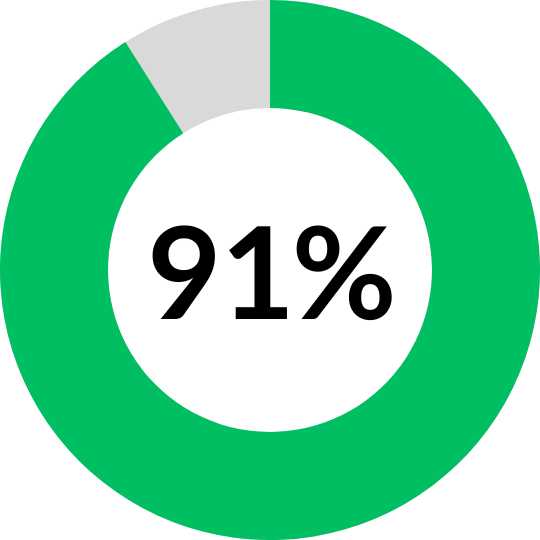
New Managers
Newly appointed managers gave an average 91% satisfaction rating
Looking for a bespoke Leadership or Management Development Programme?
Do your leaders need to improve their self-confidence and effectiveness? Fed-up of off-the-shelf training that doesn’t have any impact in the real world?
If you are looking for a programme that enables leaders to understand their personal strengths, preferences, blind spots and possible weaknesses, we can help. We support leaders to translate learning into positive changes to productivity and performance in the real-world
Give us a call for a friendly chat about how we can help your leaders flourish.
Does your HR team make things easier or are they getting in the way?
We’ve talked a lot recently about how to spot when things aren’t going well. We’ve covered cultural blindspots, festering grievances and ineffective organisational structures.
In lots of cases these problems emerge because those in charge of managing HR are distracted by other stuff!
From holiday pay and recruitment challenges through to furlough – a busy HR team often gets bogged down with no time to see the big picture. It doesn’t have to be this way!
Changes to company infrastructure and HR systems could revolutionise the capacity of your HR team and make it easier for your organisation to get things done. After all, most (if not all) HR people want to do the best for you, your teams and your customers.
Our job as HR practitioners is to enable you to achieve your goals and objectives
Great. But what are HR doing, whilst I’m doing all the people stuff?

This might come as a bit of a shock, but virtually all day-to-day people management decisions should sit with line managers, not HR.
This means everything from 1:1s, performance coaching, recognising achievements, managing attendance, and so on…
Organisations that manage people through a centralised HR department are outdated and often not resourced effectively. Gone are the days of HR making decisions for managers or telling managers what to do.
In modern organisations, it’s HR that enables and managers that manage

It makes more sense for teams to be given the skills and flexibility to manage their people properly.
If you can achieve this, then your HR team will have the time and space to make your organisation function better. There are four things they can do to achieve this (Ulrich model):
Be a Strategic Partner
-
This is about the alignment of HR activities and initiatives with your business aims and strategy.
-
Strategic partners see beyond the internal function of HR to consider the customer and how best to organise the business to serve their needs.
-
It’s usually a job for HR Directors and HR Business Partners.
Be a Change Agent
-
An HR team can be instrumental in supporting change that helps the business to achieve its aims.
-
It’s not about restructuring for the sake of it.
-
The role of HR is to be an expert and trusted adviser, and driver of change activities.
-
They should also be able to understand the future skills and talent needed to make any organisational changes a success.
Be an Employee Champion
-
Being an employee champion is about doing the best for colleagues, leaders, and customers, it shouldn’t be confused with formal advocacy or trade union activity.
-
Good leadership, clear brand values and a solid organisational moral compass will nurture authentic employee champions.
-
These people are crucial and act as the conscience of the business, taking care of people at all levels equally, and prioritising ethical and fair business practices.
Be an Administrative Expert
-
We don’t mean the world’s fastest touch-typist!
-
In the past HR was about writing letters and documents for managers as they ‘couldn’t be trusted’ to do it themselves.
-
These days it’s about creating efficient administrative systems, providing user-friendly templates for managers to personalise and most of all, maintaining excellent HR technology that enables people.
-
In short, this is where HR can and should, get out of your way.
HR falls down when we focus on one role and not excellence in all areas

How are HR using technology to manage and enable people?
Knowing when to automate processes and when the human touch is still needed, is a key skill for HR leaders.
We all expect on-demand and instant service, from banking apps to self-service tills in stores, HR is no different.
Our colleagues expect to be able to easily make holiday bookings, record appraisal ratings and access their data at the touch of a button.
An HR team that’s nailed being an ‘administrative expert’ will be creating, maintaining, and evolving systems, tools, and technology to serve you better. Remember, a system with even a minimal level of automation can save hours of wasted time and admin that does not add value, freeing-up time for HR teams to add value in other ways.
HR technology can be used enhance engagement and save valuable time

What is the gold standard for a modern HR team?
Obviously, all organisations are different, but the key is to enable your HR Team to be an integral part of the business, not an afterthought.
HR Teams come in all different shapes and sizes, but the best and most effective HR functions a focused on their customers.
Award-winning HR Teams enable managers and teams to achieve their goals
We’ll give a gold star to any HR team that…
-
Puts the customer first – HR is a core support function, so an overhead that you need to get the best value for. HRBPs and HR Directors should be structuring the business to better achieve your customer goals. When you understand what the customer needs you can shape systems and processes accordingly.
-
Is a genuine catalyst for change – Top HR teams will ask tough questions about how you’re going to achieve your objectives. This can result in minor adaptations and actions, or major restructures and changes to how the business works. Either way, a top-notch HR team will be help you to manage change effectively and sustainably.
-
Empowers others to make change happen! – Your HR team should be the experts at enabling and empowering managers to deliver the business plan for your customers.
-
Makes the best use of talent and skill – Specialists specialise and generalists generalise. Wait…what? We’re talking about making the best use of talent, skill, and experience both within your team and elsewhere. Rely on your HRBP to get the best from your HR service and help you achieve your goals, and leave specialists to deliver project work and key goals across the organisation.
-
Is totally prepared to say ‘no’ – The best HR teams help leaders to avoid unfocused vanity projects and ad hoc ‘people initiatives’ (so unhelpful) that aren’t linked to a proper strategy or business goals. Empower your HR Team to say ‘no’ to things that will not help to achieve your vision.
How can I achieve HR gold?
Be bold and give more power to the people! If your HR team is micromanaging every person in your business from some ivory tower (or just a bog-standard red brick HQ) have a good think about what they could achieve if they weren’t rubber stamping holiday request forms or typing up appraisals.
There is so much that can be achieved by overhauling outdated systems. Even by introducing one single approval workflow in a business, we saved 1,000 hours of management time over a year.
Give me a call and I’ll explain how even minor changes like this can make a dramatic difference.
I need the help of a HR specialist to transform my HR function
You might not know how or where to start changing things to create extra capacity in your HR Team. You might need an experienced and knowledgeable HR specialist to help you get started and create an action plan.
I love working with HR Teams to release capacity and release their potential. Who knows what they might achieve?
Get in touch for a friendly chat about how I can help.
Image credits
Images sourced from Canva Pro and are photographers are not individually credited. If you see one of your photos above, please let us know so we can credit you here. Photo of Andrew Knight by Nick Morrish from Nick Morrish Photography
10 proactive things leaders can do now to influence company culture
It is challenging, but possible, to change your culture. There are lots of tools available to assess culture and there are simple things you could try and implement straight away to make your place a better place.

I’ve pulled together 10 straightforward and pragmatic ideas for leaders who want to improve workplace culture. It’s time to get stuck-in with some practical and actionable things that you can do in any organisation.
I’ve split these actions into organisation-wide, team and individual actions. It’s best practice to hit all three levels to give your culture change a chance to stick.
But before you start, imagine your organisation as a complex web of different traits, habits, actions … ways of communicating. If you really want to get under the skin of what’s going on, check out our article on company culture blindspots and make sure you’re not missing something crucial to your team’s success.
Your organisation is a complex network of different traits, habits, actions and ways of communicating
Things I can do as an individual to improve company culture
• Articulate your vision – Clearly explain what your vision is, get the senior managers onboard and create a plan to communicate across the business.
• Live by your values – Make sure your decisions align with the values of the organisation, both in good times and tough times. Personally demonstrate the business values every day.
• Talk to your customers – Find out what your customers really think of you. Using an external consultant here can encourage a customer to speak more freely and give honest feedback.
Things I can do as a manager to improve company culture
• Analyse all available data – Gather statistics that reflect how your culture is impacting customers and staff. Consider: customer complaints, Glassdoor reviews, Trustpilot reviews, attrition rates/absences and staff complaints.
• Listen to your team – Spend time with people. Visit the shop floor. Be seen. Be approachable. Get to know your staff and ask them what their experience of the business is.
• Recognise how COVID-19 changed how teams work – How has hybrid working during COVID-19 impacted team culture? Avoid ‘forced fun’. Consider scheduling people to be on-site at the same time, so they can work together naturally. Online collaboration time can be as helpful as blocking-out time for deep and meaningful work.
• Monitor workload & set boundaries – Make sure that everyone has an equal chance of success, time to meet customer expectations, and sufficient down-time. Consider a ‘no video meeting day’ each week, to allow space to focus.
Things I can do across my organisation to improve company culture
• Survey your team – When did you last benchmark how people are feeling? You could survey all your staff to see how they are feeling about the organisation post-pandemic. (Maybe a statement of the obvious, but only do this if you have bandwidth to analyse the results, listen to what you’re being told and crucially, do something about it.)
• Review your organisation design – Has any unfairness crept in due to remote working during the pandemic? Have you buried problems by some people not being physically present? Is everyone clear on who their manager is and who they go to for help?
• Improve internal communications – Check your communication channels work and reflect your company values. Are you sending a weekly newsletter into a black hole? Are people engaged? Is it 100% broadcast or is there interaction? If you are getting interaction, does everyone have a chance to join in?
Quick fixes won’t create a lasting and positive culture
Invest in your culture
Why bother investing in company culture? Well, it’s no coincidence that happy, healthy, profitable businesses put aside time and effort into nurturing a positive culture. Let’s be clear, this is a conscious choice that leaders make to invest in a positive, inclusive and productive workplace culture. It doesn’t have to be difficult but culture change does have to be planned and coordinated.

Taking action, particularly in a large business with lots of complexity, may feel like a mammoth task. This is particularly true if you’re not sure where to start.
Company culture is a bit like health & safety, compliance, safeguarding, etc.; it’s everyone’s job to develop and grow a positive workplace culture, but it starts with you. Leaders set the tone.
If the idea of cultural change is too much, an external consultant might be a worthwhile investment. It’s more cost effective to bring in a HR Consultant to do it right first time, than asking your team to try and pull together a plan for culture ‘off the side of their desks’ (and usually over a longer period).
Positive culture doesn’t just happen. Bring in an expert to get things moving and upskill your team
Depending on your workload and available resources, I’d always suggest allocating someone specific to lead on cultural change, whether this means bringing in an expert to work alongside and upskill your team, or giving someone a secondment or project opportunity. That way you’re getting focus and energy in the right place, and developing your own in-house capability at the same time.
However you do it, it’s all about enabling you to take control of your own cultural destiny and not being ‘done to’ either through inertia or reacting badly to events because your culture isn’t resilient or flexible.
I want to make positive cultural changes, but I need help getting started…
It can be daunting to get started, so you might need an experienced and knowledgeable HR consultant to assess your culture and create an action plan.
As a specialist in organisational change I love to get stuck-in and support clients to make positive changes in the workplace.
Get in touch for a friendly chat about how I can help.
Mergers and Acquisitions: How to Spot and Avoid Culture Clashes
There are rules for all the legal bits of a merger or acquisition process, yet there is no bible or handy instruction manual for the successful transfer or integration of company culture.

What is workplace culture?
There is no magic formula, but regular and meaningful is a good rule of thumb.
Workplace culture is your way of doing things, your approach and style of business. It’s the difference between ‘my door’s always open’ and ‘make an appointment with my PA’. It’s often tricky to explain but culture manifests itself through leadership style, how you treat your customers and colleagues, and the diversity of your workforce.
Culture can be seen in your people, personality, structure, purpose and values.
How can culture impact M&A?
An unforeseen culture clash creates an uncomfortable, disengaged work force.
If people don’t understand the values and objectives of the newly merged business they will quickly retreat into the familiarity of the old. This can slow down the integration of departments and operational systems. It also compromises customer service and sales if frontline colleagues don’t understand what kind of messages they should be communicating.

Every successful merger and acquisition has a plan to retain key talent and avoid an exodus
- Everyone’s talking about the great resignation at the moment, so it’s more important then ever before to have a plan for engagement, talent and culture. Especially if your acquiring a business or merging two organisations together.
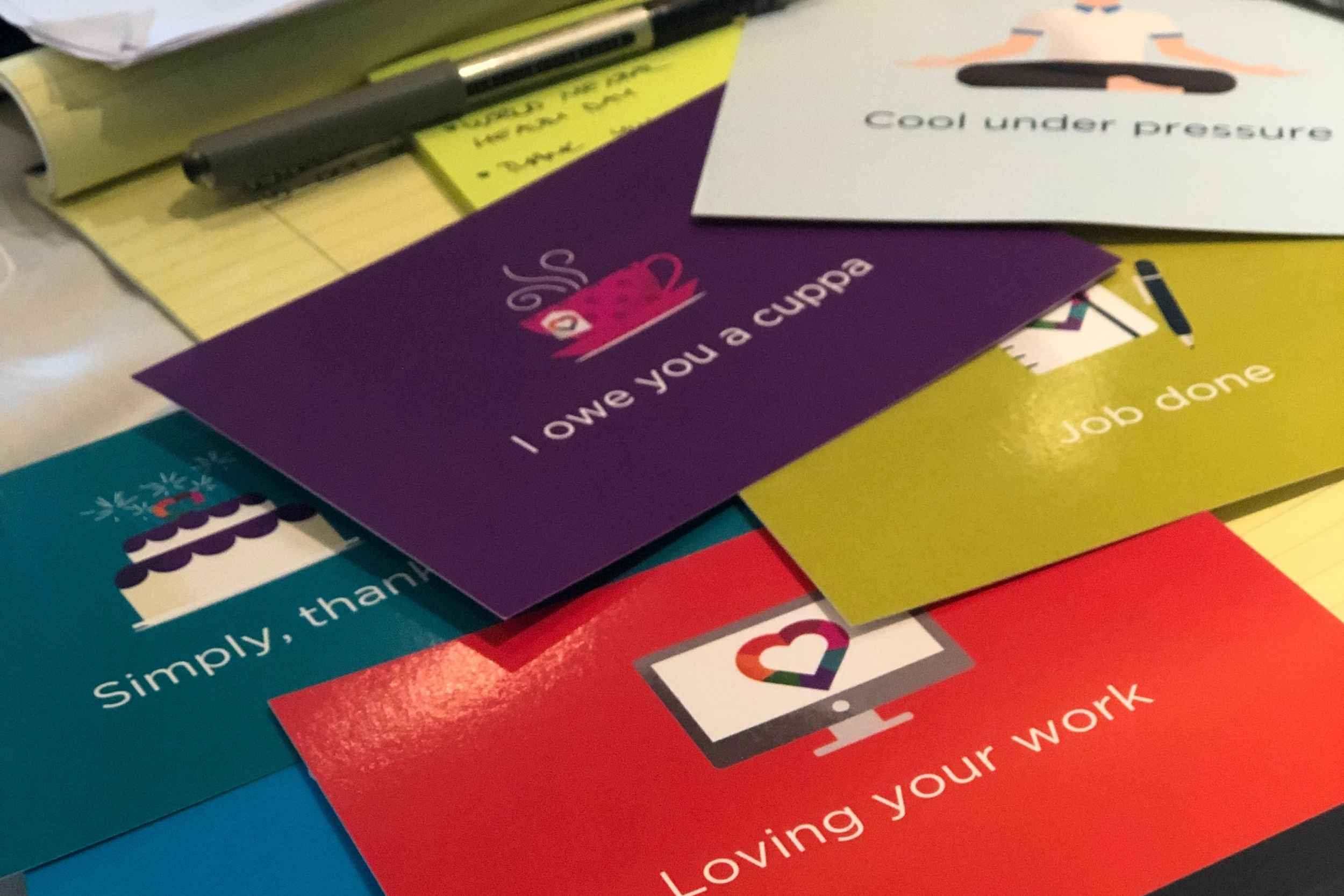
How can I assess the culture of my acquisition?
It might be tricky to really get under the bonnet of your acquisition in advance of the legal transfer date. Certain information around TUPE, finances, compliance and commercial integration, are accessible. But when it comes to engagement and culture, you’re not going to be able to hover around the water cooler or join a team meeting to gather intel!
If you’re using an independent HR consultant to help you navigate the legal aspects of your merger or acquisition this can also be a great way to assess potential pain points and plan for the challenges ahead. An independent person may gain more access to the company being acquired and can help you learn more about the people you’re bringing in.
What clients say about our approach to M&A
“He did all the detail but he was also great at creating relationships. So whilst we were getting all the paperwork and legal stuff in place, he worked really closely with the individuals that were going to come into the business to build trust with them.”
Heyley Selway
Chief Executive, CCHA
“Studies from the Queens School of Business and the Gallup Organization showed that organizations with low employee engagement scores experienced 18% lower productivity, 16% lower profitability, 37% lower job growth, and 65% lower share price over time.”
Emma Seppälä & Kim Cameron
Harvard Business Review
Why does culture matter?
Clearly defined culture is a sign of a positive, engaged workforce, which means exceptional customer service, confident sales and marketing, increased productivity, reduced staff turnover and a better share price. Why? Because when everyone is working towards a shared vision your people are an amazing asset. When they don’t feel part of the bigger picture they switch off, and can do some serious damage.
Try to understand what the cultural differences are between the old and new company. Nip any opportunity for a ‘them and us’ dialogue to take hold with a clear communication plan that’s put into action pronto!

An engaged workforce is more profitable – can you afford not to think about culture?
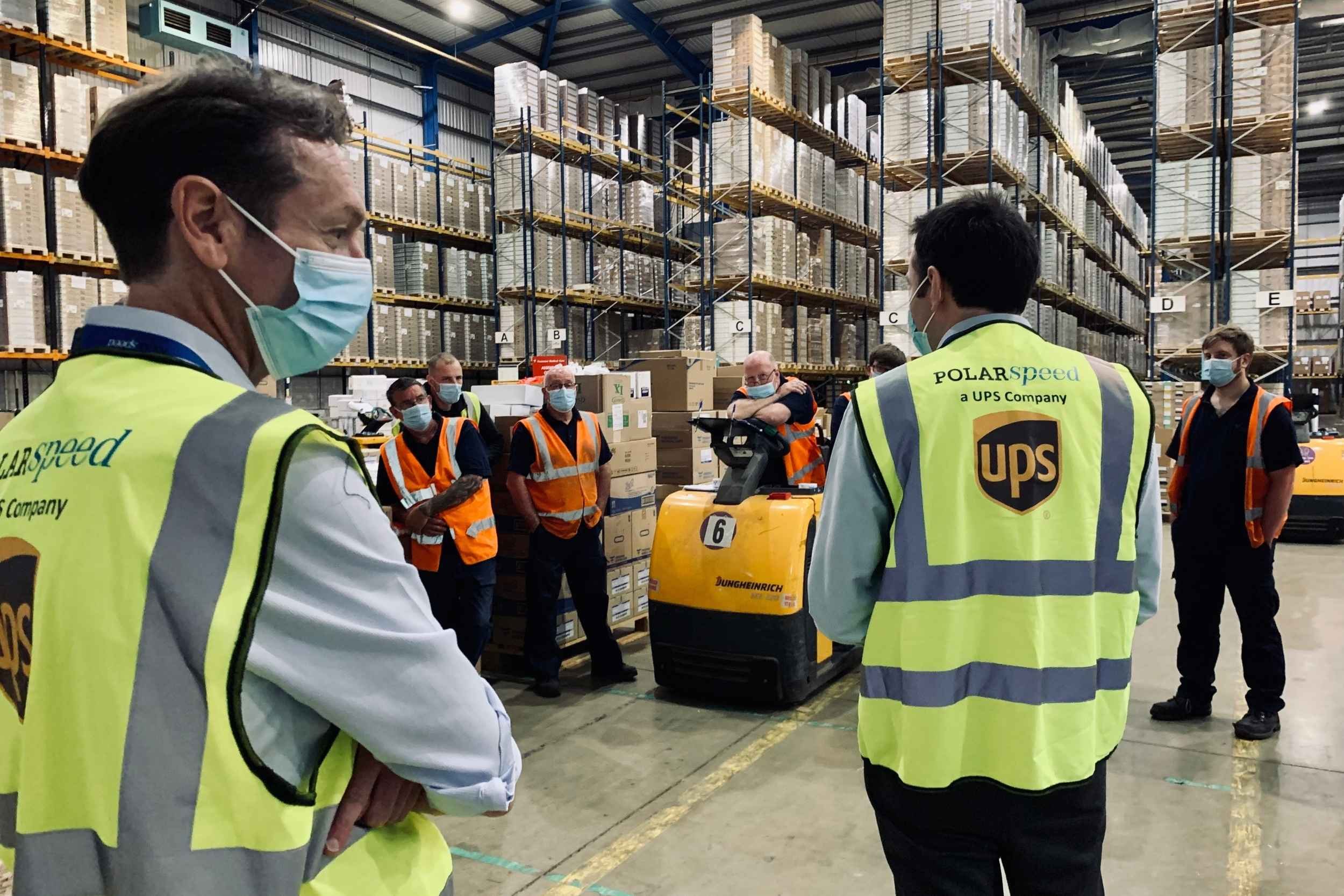
Do leaders know how to promote positive culture?
If people are used to being managed in a certain way it can be deeply unsettling when a new regime comes along. One of the best ways to establish your organisation’s culture and ethos early on, is for management to get out on the shop floor and talk to people.
As a minimum, you should plan on hosting a Welcome Meeting where you can meet your new colleagues and tell them a bit about you and the new company. You can do more. Whether it’s a staff conference, video message, virtual event or just chatting informally to teams or individuals, nothing reassures people more than a boss that takes the time to listen.
As well giving people practical, operational information about how the business will look in the future it’s a great opportunity to gain insight into how people are feeling about the change.
A Welcome Meeting is a ‘must do’ when it comes to mergers and acquisitions
- Working out a change management plan in advance can give leaders structure and focus as they communicate their vision to employees old and new.
- This doesn’t come instinctively to everyone. You might be a sector-leading professional, with a multi-million pound business but actually have no idea how to inspire your workforce. Or you might just be shy! Use leadership coaching to help you articulate why the business matters and what your aspirations for the future are.
- It will help your team understand the right way of doing things and in times of pressure and stress they will feel confident about what you and the organisation stand for and which behaviours are unacceptable.
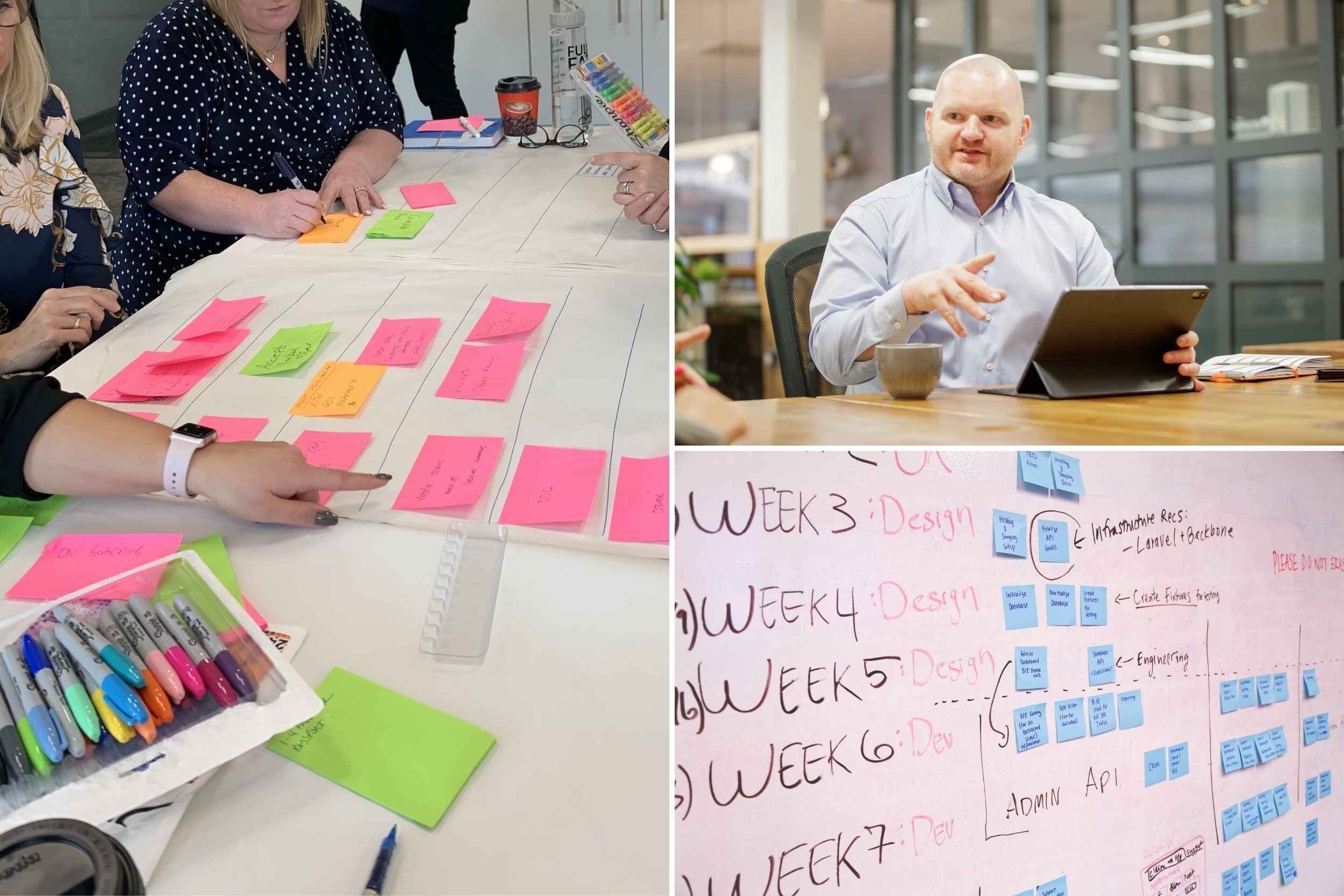

How can I take people with me?
As you plan for the future, consider the composition of your workforce.
If your organisation is office-based and you’re acquiring a business that works out in the field, how will you make those people feel welcome and avoid a two-tier workforce? Your ways of working and communicating historically may not suit your new colleagues. Sending an internal newsletter once a week via email is no good if half the business don’t sit at a desk (or have a smartphone).
As you move forward, find communication channels that work, so you can keep people informed, feeling part of the same team and contributing to your business goals.
Communicate in new ways to reach colleagues at all levels during and following an acquisition
- Ultimately it’s people that make the organisation tick, so make sure your people soak up the right information, so they’re able to perform in the way you want them to.
Don’t know where to start when it comes to supporting your team through the Cost of Living Crisis?
We are passionate about finding ways to help bosses do the best they can to look after their people.
Some of what we’ve outlined here is simple, but implementing activity that’s targeted to help those that need it most often gets businesses in a pickle. Primarily because they get bogged down about treating all employees the same.
If you need help to work how to support those that need it in a way that’s fair and legal, then please drop us a line. We’d be happy to talk to you.
Polar Speed | TUPE Transfer
We’ll do the heavy-lifting so you don’t have to
“We engaged the services of The Spark Company to assist us with a TUPE transfer. Having Andrew on board for the project gave me full confidence that the HR aspects were in control in safe hands, allowing me to focus on the other aspects of the contract and implementation.”
Jonathan Dyer
Engineering Manager

Client
Polar Speed, a UPS Healthcare Company
- Polar Speed is the UK’s leading temperature-controlled supply chain expert, part of UPS Healthcare, global leaders in temperature-controlled logistics.
- Polar Speed serves a range of sectors including: pharma, medical devices, diagnostics, hospitals and clinics
- Polar Speed delivers directly to the homes of thousands of NHS patients and private patients.
Challenge
Transfer a group of employees as services are outsourced, without disrupting patient deliveries
- A customer asked Polar Speed to take over the running of an in-house patient medication delivery service.
- The Spark Company was commissioned to manage and deliver the people aspects of the outsourcing project, including TUPE.
- A group of employees would TUPE transfer to Polar Speed.
- The incoming team made daily deliveries of kidney dialysis equipment and consumables direct to patients' homes, so service could not be interrupted.
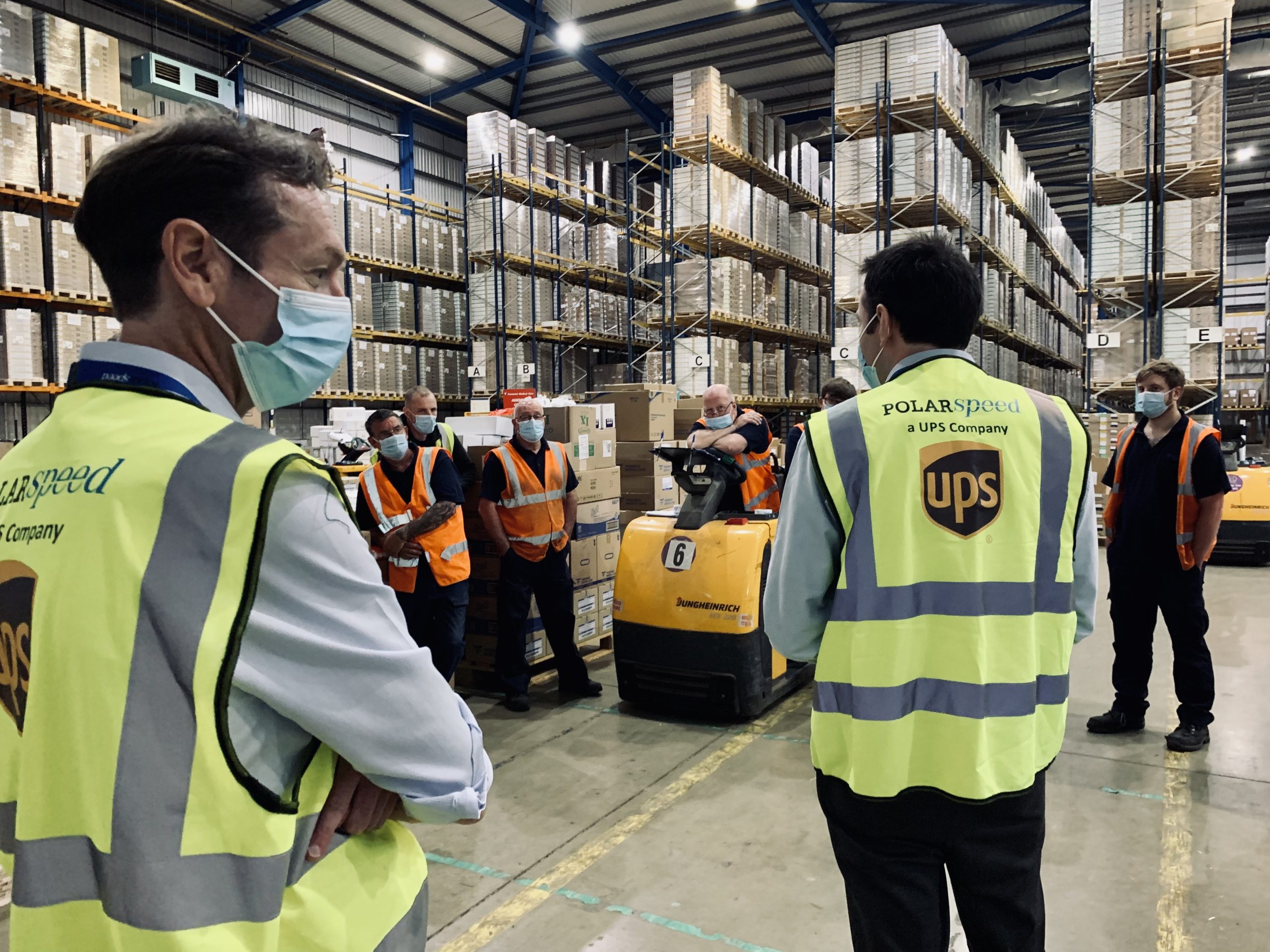
We’ll do the heavy-lifting so you don’t have to
“Andrew and I worked on a project together recently and his expertise and efficiency were second to none. He provided an impeccable service, friendly, fast paced and with attention to detail. He always provided the outcomes he'd committed to, and was always engaged, responsive and a really safe pair of hands for a complex project. I'd recommend his skills to anyone.”
Daniel Armstrong-Hill
Project Manager

Solution
Clear, honest and open communication throughout the transfer process
- We worked together with the in-house HR Team and quickly got up-to-speed.
- We joined Polar Speed's project team and took responsibility for the people aspects of the change project.
- We liaised with the outgoing employer and proactively supported the consultation process before the TUPE transfer date.
- We briefed managers and helped the in-house HR and Payroll Teams to prepare their systems.
Impact
Service and employees transferred; no disruption to service delivery
- The team transferred without interruption to patient services – all still whilst observing COVID-19 safety measures!
- No grievances, complaints or resignations were received.
- We supported our client with engaging communication tailored to drivers, administrative and warehouse staff.
- We ensured everyone got paid properly on their first pay day and helped Polar Speed to resolve pay and pension queries.
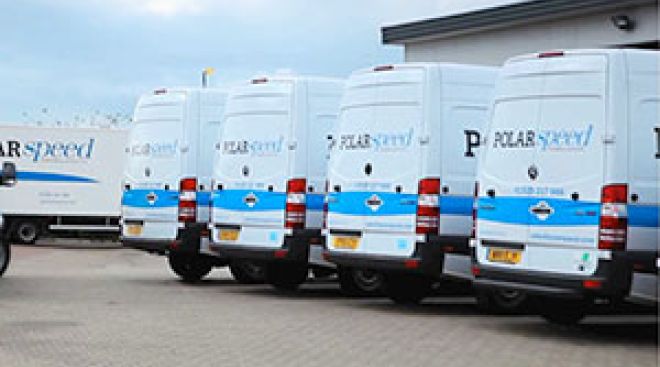
Do you need help to insource or outsource a group of employees?
Is your business growing through acquisition, or perhaps divesting services which no longer match your core mission?
If you are looking for a HR Consultancy to take care of Due Diligence, Employee Liability Information, Consultation and TUPE, then you need to speak to us. We can work effectively as a dedicated project leader, as part of your in-house team, or as an advisor to your executives, board and senior management.
We're ready to help you achieve your business goals through your people, and make TUPE one less thing you have to worry about.
How to put people at the heart of company decision making
Introducing a HR strategy that automates simple tasks and frees up time to focus on building a positive, people-focused company culture

- There are many misconceptions about the role of HR, which are often driven by a lack of visibility.
- When managers take accountability for people tasks that were traditionally considered part of the personnel function, it’s often seen as an indicator of good leadership; a sign that the people at the top of the company communicate well with their team. In many instances, there’s not always a need to call on HR to settle issues surrounding things like contracts, training, appraisals or bonuses.
- It’s more common to call on HR when a more technical or complicated people-related issue comes up. For example, when there’s uncertainty around regulatory or legal requirements surrounding employment, HR may be brought into the conversation as subject matter experts.
Misconceptions about HR are driven by a lack of visibility.
- A natural downside to this way of working is that many employees will only ever come across a HR professional when they’re being interviewed, or having to go through some sort of formal performance management or disciplinary process. This means that HR is sometimes seen as the department of ‘hiring and firing’, or that the ‘H’ in HR stands for anything other than human.
- I believe there’s a better way to approach the integration of HR in organisations: one that still allows leaders to stay connected with the people in their teams while placing the focus on core company values to better care for both colleagues and customers
- HR is the custodian of fairness, equality and inclusion in any business. This means that they’ll put systems and processes in place to make sure that you’re not discriminated against. You may not see them at any point during the selection process, but if you’re treated with dignity and respect, we’ve done our job right.
How should I be managing and developing performance in my organisation?
- The key to managing performance is open and transparent conversations, where the employee feels in control of their own destiny.
- Both employer and employee know what’s expected of them, what they’re great at, and where they need support. It’s not rocket science, this approach builds engagement, which is better for business.
- Research shows engaged employees generate 43% more revenue than disengaged counterparts. High engagement can also lead to a tripling in profit growth, an 87% reduction in staff turnover and a 20% improvement in performance.

Why quick fixes aren’t enough
- There’s no question that many businesses set out to do the right thing. Leaders often strive to live and breathe the core values of the companies they run, so that their actions, behaviours and decisions are consistent with these values and their organisation’s overall purpose.
- Some of the ‘quick fixes’ that businesses choose to demonstrate that they value their people and communities include:
- Flexible reward and recognition schemes
- Paying at least the living wage
- Developing a pipeline of leaders within the business
- Reinvesting profits in community investment schemes to demonstrate social value
Quick fixes won’t create a lasting and positive culture
- While these actions are all commendable, there are wider and more strategic decisions that can be taken to create a lasting and positive culture. This is where a dedicated HR expert can help.

A new model for HR
- Executives, directors, boards, business owners and leaders might consider moving from the Ulrich model (where HR is separated into roles such as employee champion, change agent, strategic partner and administrative expert) to a more evolved HR network model – one that builds on the success of existing business partnering relationships.
- Nowadays the majority of service centre work can be dealt with via automated workflows, AI, chatbots and self-service apps, allowing people to take care of admin tasks themselves. This means that tasks like managing annual leave balances, recording absences and related documentation or making basic queries about salary payments no longer require the resources they once did.
The team that previously would have managed such tasks will now be free to manage self-service platforms and related processes. In larger organisations, personalising and tailoring these platforms to the needs of the people who use them can be achieved without sacrificing efficiency or compliance.
HR needs to change. It’s time to focus on ‘people not process’
Meanwhile, HR project teams can act as internal consultants, focusing on work that is directly informed by the company’s people strategy. Their expertise can call upon a blend of internal and external resources, with subject matter experts working on important strategic areas of work such as:
- Organisational development
- Organisation design
- Diversity and inclusion
- Rewards
By following a model like this, HR becomes a network of change, engagement and influence. Your people team becomes a key part of wider business decision making, blurring the traditional boundaries of HR and putting people at the very heart of what the company does.
HR networks are excellent at building and growing relationships, managing change and engagement and work to achieve the wider strategy goals. When you consider all this, it seems natural to include HR in your decision making process.
Don’t know where to start when it comes to supporting your team through the Cost of Living Crisis?
We are passionate about finding ways to help bosses do the best they can to look after their people.
Some of what we’ve outlined here is simple, but implementing activity that’s targeted to help those that need it most often gets businesses in a pickle. Primarily because they get bogged down about treating all employees the same.
If you need help to work how to support those that need it in a way that’s fair and legal, then please drop us a line. We’d be happy to talk to you.
Ascenti | Interim HR Leadership for a leading provider of physio and mental health
Happy Clients
“Andrew is brilliant at engaging with people at all levels and across the whole business. If you need someone that can really bring people together and make things happen quickly, he’s a great person for that.”
Stephanie Dobrikova
Chief Executive Officer

Client
Ascenti
- Ascenti is the UK's leading provider of physiotherapy and mental health services.
- The Ascenti team provides excellent patient care at over 400 clinics across UK, supported by office-based and regional teams.
- Patients are treated by a national network of 500 directly employed Ascenti clinicians delivering upwards of 600,000 treatment sessions every year.
Challenge
Step in as Interim Head of HR and lead strategic projects
- Ascenti's previous Head of HR had moved on leaving a gap in the HR Team.
- HR leadership was needed to navigate the people impact of both a global pandemic and Brexit
- Ascenti’s leadership team needed an Interim Head of HR to support them during this challenging time.

Happy Clients
“Andrew hit the ground running and unlike many other HR consultants who can often create more work for the team, he lightened our workload.
We are undoubtedly better off as a business having worked together and I wouldn’t hesitate to recommend The Spark Company to others.”
Sophie Harper
Chief People and Communications Officer

Solution
Remote HR leadership through uncertain times
- We led the in-house HR Team remotely when none of us could meet face-to-face.
- We supported the Executive Team to review and simplify organisation structures.
- We ensured legal compliance of visas for all overseas staff – an important consideration as the Brexit transition period ended and new immigration rules emerged.
Impact
Key talent was retained so patient-facing services could return to ‘normal’ without disruption
- Majority of roles protected and colleagues furloughed, particularly clinical practitioners who were essential for patient care.
- HR roles restructured and redefined, giving Ascenti a scalable structure to support future growth.
- Upgraded HR and Payroll technology to enable self-service and minimise wasted time
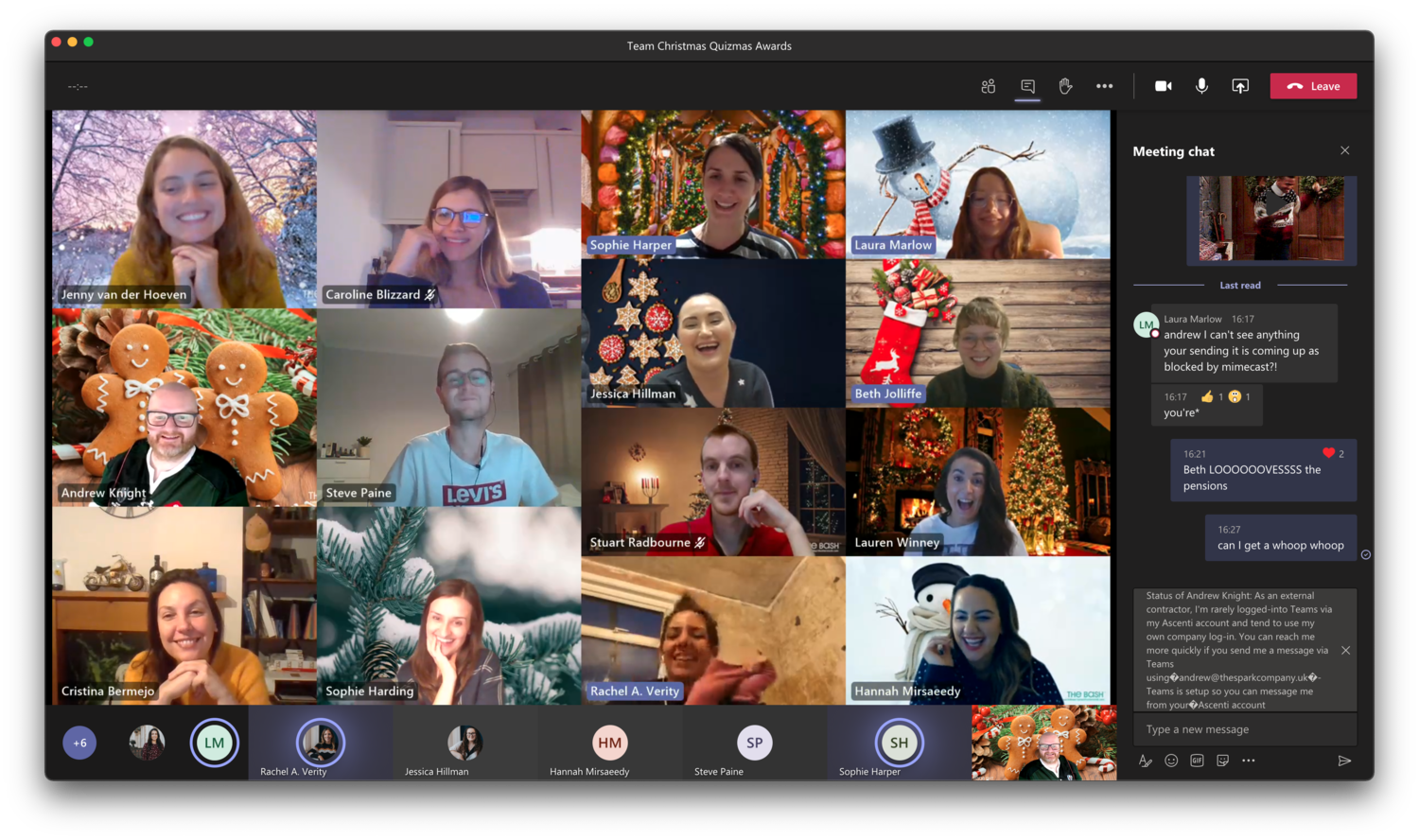
Looking for an interim HR Director that can hit the ground running?
Do you need short-term cover for a HR Director or People Director role? Tried recruiting and still can't find a Head of HR or Head of People? If you are looking for a HR Consultancy to take the pressure off you and temporarily manage your HR function, then you need to speak to us.
We're ready to step in, give you interim strategic HR support, and get stuff done…until you make a permanent hire.
